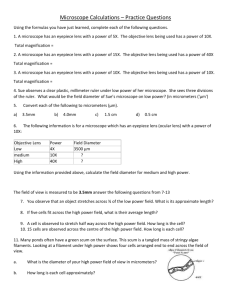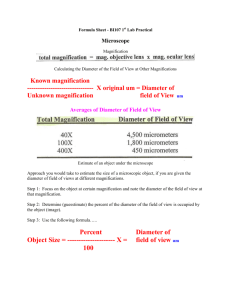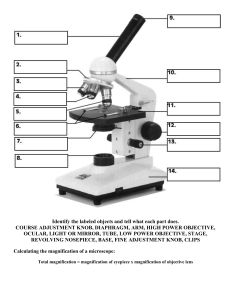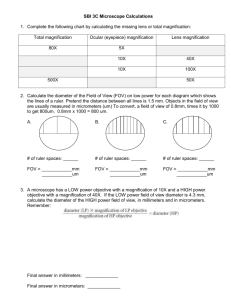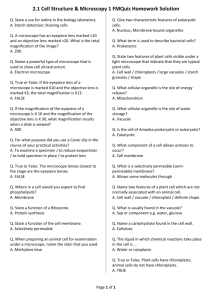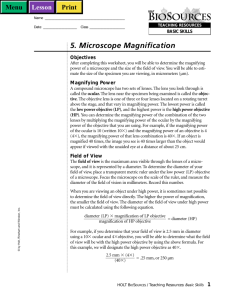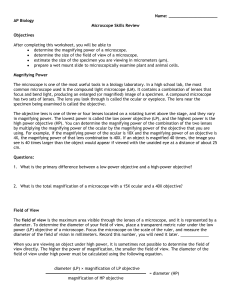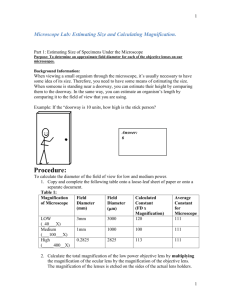File - Mr. Downing Science 10
advertisement
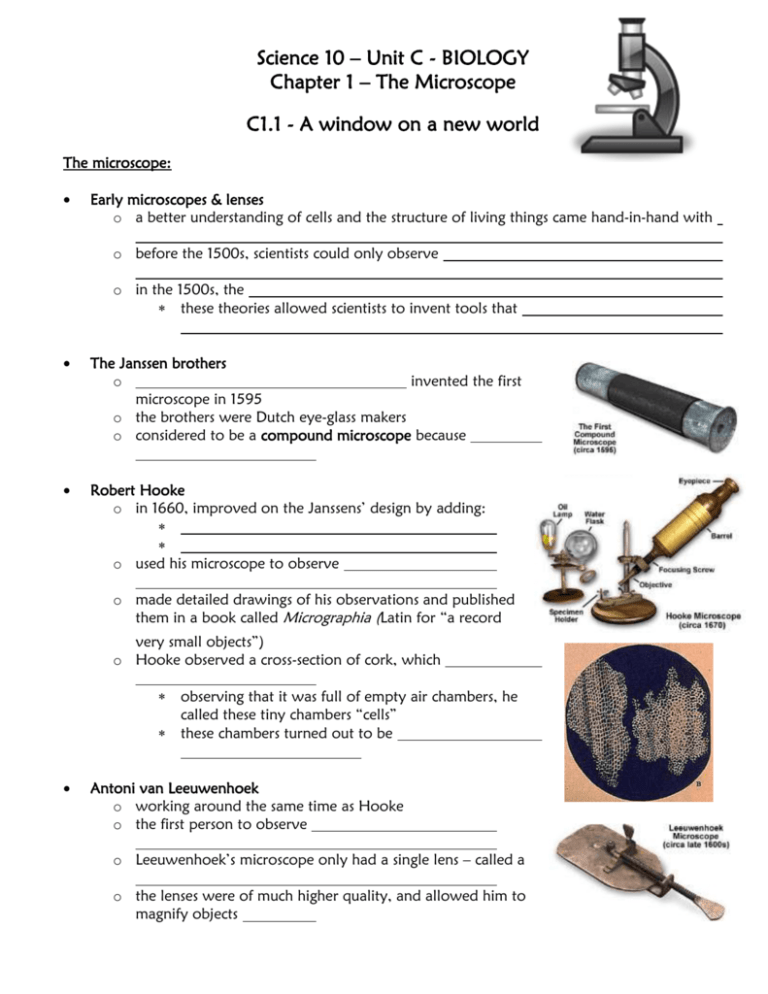
Science 10 – Unit C - BIOLOGY Chapter 1 – The Microscope C1.1 - A window on a new world The microscope: Early microscopes & lenses o a better understanding of cells and the structure of living things came hand-in-hand with o before the 1500s, scientists could only observe o in the 1500s, the these theories allowed scientists to invent tools that The Janssen brothers o invented the first microscope in 1595 o the brothers were Dutch eye-glass makers o considered to be a compound microscope because Robert Hooke o in 1660, improved on the Janssens’ design by adding: o used his microscope to observe o made detailed drawings of his observations and published them in a book called Micrographia (Latin for “a record very small objects”) o Hooke observed a cross-section of cork, which observing that it was full of empty air chambers, he called these tiny chambers “cells” these chambers turned out to be Antoni van Leeuwenhoek o working around the same time as Hooke o the first person to observe o Leeuwenhoek’s microscope only had a single lens – called a o the lenses were of much higher quality, and allowed him to magnify objects Skills in microscopy Magnification: o magnification = (power of the objective lens) x (power of the eyepiece) eyepiece lens – always 10X objective lens low power: 4X medium power: 10X high power: 40X o practice problems What is the magnification of a microscope with a 10X ocular (eyepiece) lens, and a 10X objective lens? How much more powerful is the magnification on high power compared to low power? Field of view: o field of view can be described in terms of o when the lens power increases, field of view o the field diameter on low power can be measured by placing a ruler under the microscope o the field diameter on high power can be calculated using this formula: high-power field diameter low-power field diameter = low-power magnification high-power magnification o practice problems The image to the right is the view through low power. What is the field diameter of this microscope? What is the field diameter on high power? How many times smaller is the field diameter on high power as on low power? Scale: o to calculate it, compare the diameter of the circle in the drawing with the diameter of the field of view you calculated previously o e.g. a drawing with a diameter of 90mm done from low power would roughly have a scale of 90mm:29mm or 3:1. Actual size o once you know the field diameter, you can estimate an object’s size by noting how much of the field of view it occupies o this can be done by estimating how many times across the object would fit e.g. if it would fit 10 times across, it takes up 1/10th of the field of view o e.g. if the field of view is 29mm and a cell takes up about 1/3 of the field of view, it’s actual size is about 10mm o practice problems our field of view on high power was found to be 2.9mm. What is the actual size of this cell, as viewed under high power? what is its size in micrometers? (hint: 1 mm = 1000 µm) Homework: Skills practice p. 244 a & b Check and Reflect p. 246 #1, 3, 4, 8


